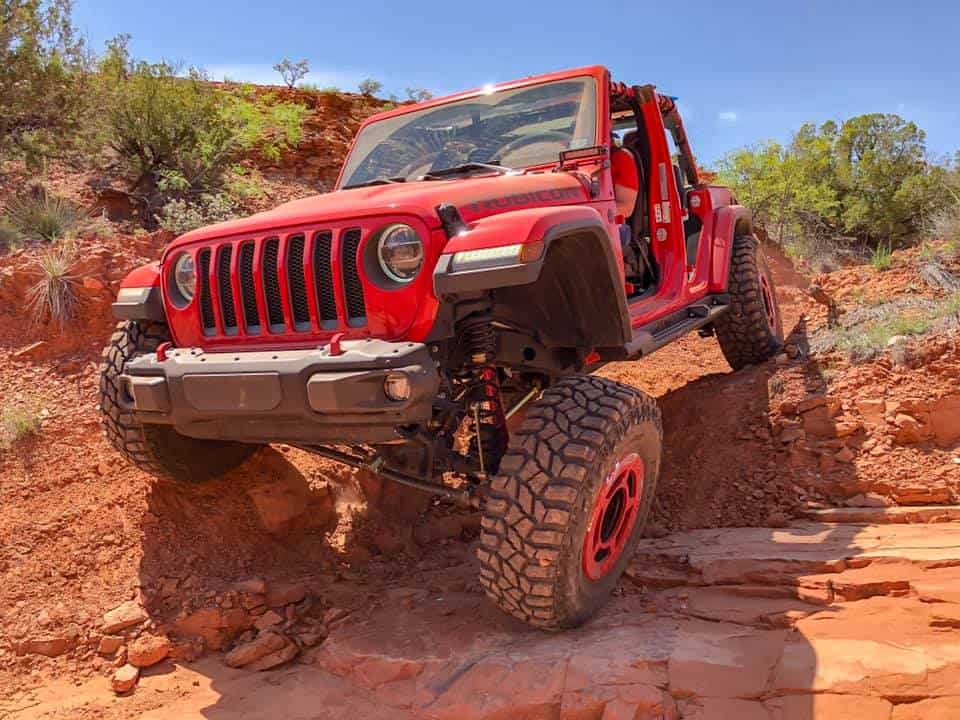Lifts on a Jeep are probably the most sought after modification by new enthusiasts while also being the least understood. I spent literally years of research before installing my first lift on my Jeep and definitely fell into analysis by paralysis. However, after lots of experience and trial on my own rig, I’m here to help guide you through the murk of choosing a lift for your Jeep.
How do you choose a lift kit for a Jeep? First, you need to have a full understanding of the geometry of suspensions, what you want to accomplish by lifting your Jeep, and the limitations of your specific vehicle. Second, you can choose specific suspension upgrades that will complement your rig and help it perform to its maximum potential.
As always, your Jeep your choice. However, the truth is, there’s no way to cookie cut a lift ‘kit’ that works for every Jeep. But, knowing what to choose and what you really need can be a minefield to navigate. Below, I’ll dive into everything you need to know to successfully build a setup that works perfectly for YOUR rig.
What is a Lift Kit on a Jeep?
A lift kit is anything that raises the ride height of your vehicle by any amount over the stock height produced from the factory. Most lift kits change either the height of the suspension or the height between the body and frame.
On any vehicle, you have a suspension system that, in very simple terms, connects your car to the wheels and tires. There are several different types of suspension systems out there. However, most Jeeps (1997 – present) work off of a 4 coil spring system connected to a solid axle. These coils are at each “corner” of the car and are what determines your ride height.
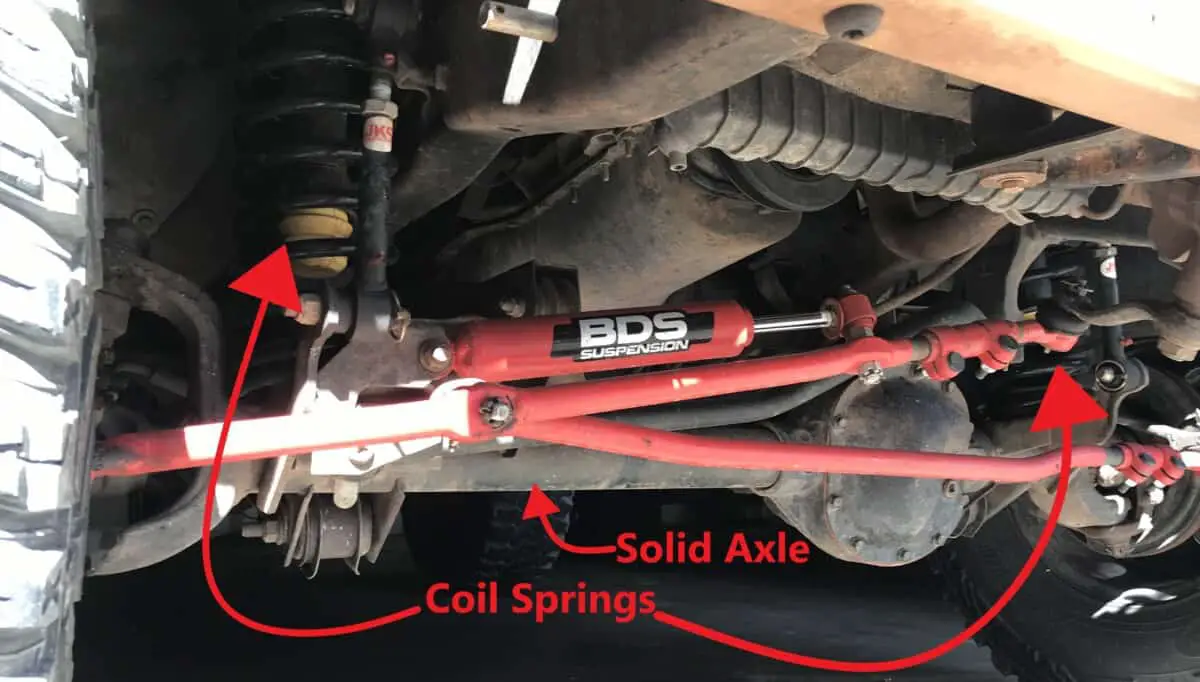
On older Jeeps and still lots of trucks, you have leaf springs. The overall purpose of leaf springs is the same as coil springs.
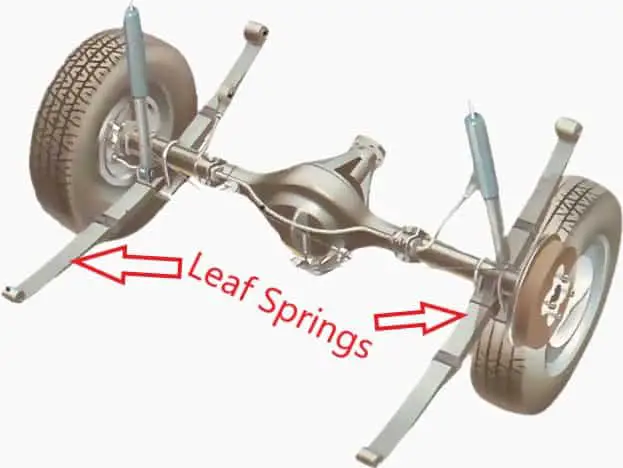
When you are thinking of or hear people talking about adding a lift kit to their Jeep, most often they are talking about changing the ride height of their vehicle by adding larger coil springs or leaf springs.
Unfortunately, it’s not as simple as stuffing larger springs under your Jeep. When you change one thing in the suspension, there are usually several other things that will need adjustment or replacement as you are changing how it was designed to run from the factory. Hence, the name “lift KIT”, as it is a kit of things to replace or change.
Do You Need a Lift for Your Jeep?
Alright, so now that we know what a lift kit is…time for the gut check question. Do you actually need a lift?
Do you actually NEED a lift? The short answer is no. Jeep has a long reputation of being the most off-road capable vehicle right from the factory. There are tons of places you can explore without ever adding a lift. It actually makes you a better driver when you learn to navigate the wilderness in a bone stock vehicle.
You don’t have to convince me how much you WANT one. I get it. Every Jeep owner at some point has wanted to lift their Jeep. And understandably so. Nothing compares to a well-lifted Jeep sitting on big tires that looks like it can conquer anything.
However, the second you decide to lift your Jeep, there is a world of things that change and you need to be sure you can handle them correctly. Just because you WANT a 6″ lift on 37s doesn’t mean you will ever NEED that. And I’ll tell you right now…that setup done correctly will stretch your wallet real thin. Now if money isn’t a question, go for it. But if you are on any kind of budget, you really need to determine what you can afford to invest here.
So right now, you need to ask yourself how much you really need this lift. What is it you’re trying to accomplish by lifting your Jeep? Is it just for looks? Or is it a serious off-road machine? Is it a daily driver with some fun on the weekends? Whatever it is you’re trying to accomplish is your business. Just make sure you know what is and prepare yourself for what’ll it take to get there. This brings us to our next step. What’s the end goal?
Determining the End Goal and Plan for Your Jeep
If you spend any time in online forums or around people who work with Jeeps or modifying vehicles, you’ll hear this all the time. You HAVE to know what your end goal is and what it is you are trying to accomplish with your Jeep.
You might be reading this wondering when we get to the part where I tell you exactly what you need for a lift. And guess what…I am. This is a crucially important step.
You can’t just throw random stuff at your rig and expect it’ll turn out amazing. You have to know what works together.
For example, if you start building an Overlanding rig that spends hours on the freeway traveling to and from destinations and only sees moderate trails, you don’t want to switch halfway through and decide to build a rock crawler on 40s with one-ton axles. So much changes between the end goals of the two builds.
However, if you want to build a Jeep that can do a little bit of everything, that’s perfectly possible. But guess what, you have to plan for that now and know that’s your goal ahead of time.
So, right now, before you do anything else, literally write down somewhere what your end goal is for your Jeep.
I highly recommend starting an excel sheet where you can start adding parts and pieces to track on your build.
This will help greatly with our next key point….setting your budget.
Setting a Budget for Your Jeep Lift
In the world of aftermarket Jeep parts and accessories, there is a time and a place to save money and go with some less expensive items. Believe me, I am the first person to recommend an off-brand item when I can. I even wrote an entire article on Cheap Mods for Your Jeep!
I’m here to tell you right now…DO NOT SKIMP ON YOUR LIFT. The components that go into a lift kit determine so much about your Jeep. Ride comfort, durability, safety, and performance are just a few things to consider.
You can most certainly go with cheaper options in a lift, but this is one area where you will get what you pay for. If you are like me, and do tons of research, and want to do things right the first time and not question yourself down the road, then don’t skimp.
If you don’t have the money now, save it. Whatever you have to do, just don’t settle because you are in a rush. Before we get into the mechanical specifics of choosing a lift, the last thing you need to do is set your budget.
Put a number on a piece of paper or in an excel sheet. Be realistic and be honest with what you can actually afford.
If you don’t set a budget, you can kill your wallet with unexpected expenses and uncarefully carried out purchases.
By having a set number, you re-evaluate every purchase to make sure you are getting the most bang for your buck.
Chances are when you are that careful with your money and the pieces you choose to buy, you’ll end up more satisfied with the end product. Take some time to quickly add up some major costs of the lifts you’re looking at and give yourself a little buffer above the sum of that number. If you have to save up some money, so be it. It’ll be worth it in the end.
Now let’s get into the meat and potatoes of understanding and choosing the best lift components.
What is a Jeep’s Suspension Geometry?
Suspension geometry is a huge topic. So much so that in the future I believe it will be very pertinent to dedicate an entire article just to geometry. For the sake of this article and helping you understand the basics though, here’s what you need to know.
What is suspension geometry? In simple terms, the suspension of your vehicle: supports the vehicle’s weight, maintains vehicle height, keeps tires on the ground, determines ride comfort, and keeps everything aligned properly. Suspension geometry is how all of those components work together to accomplish those tasks.
Every car suspension is designed and produced to work at it’s best from the factory. The engineers put in place very specific tolerances and angles so that everything meshes together and works in unison.
What happens when you change just one thing? That’s right…you change it all. And that’s exactly what you are doing with a lift.
The big players in the suspension of your Jeep are:
- Control Arms
- Track Bar
- Drag Link
- Springs
- Axle

From the factory, all these components are set and tuned off of each other. For example, your pinion (pinion gear that comes out of your differential in the center of your axle) has a very specific angle that is determined by your control arms. These control arms also determine the angle of the axle housing called the caster angle.
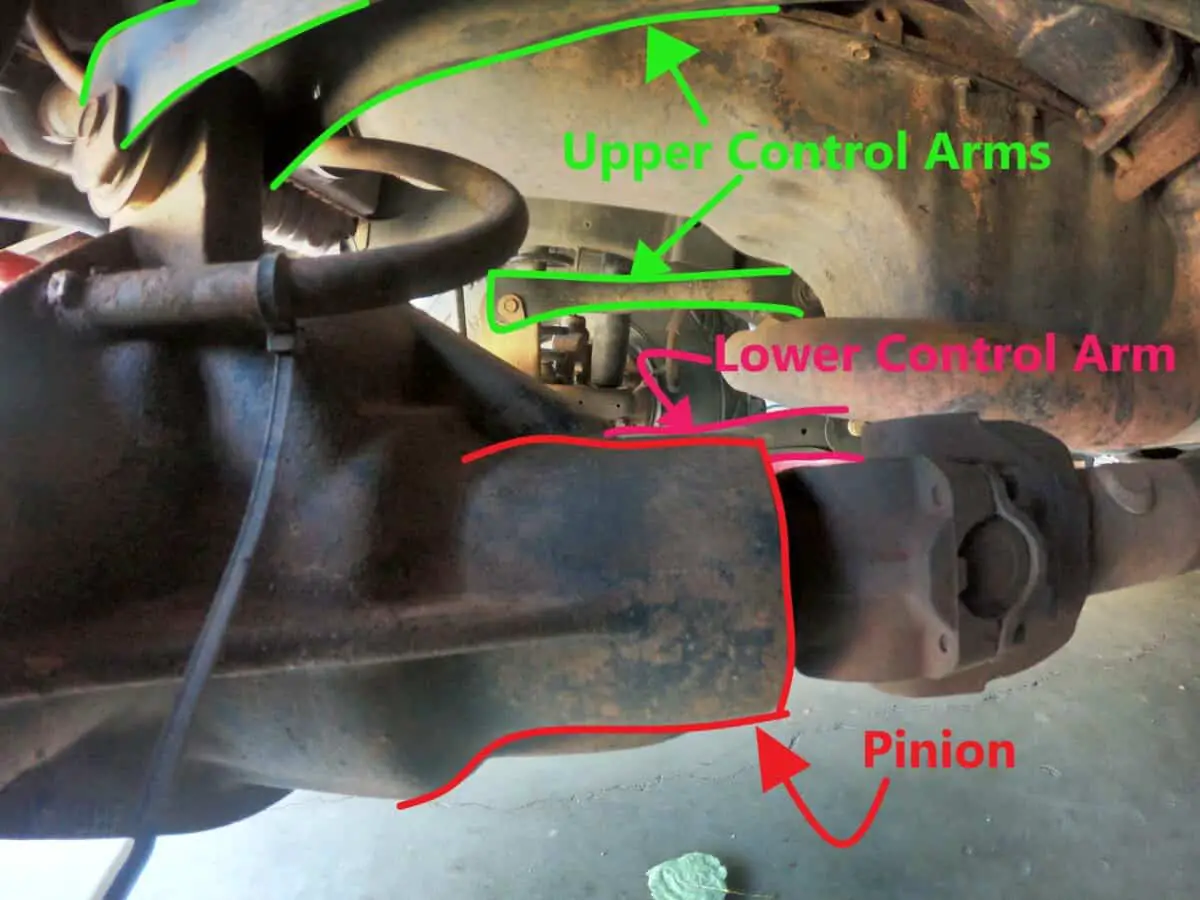
When you install bigger springs to lift your Jeep, you’ve done two things. You’ve “pushed” the axle down from its factory location. But because your control arms are a fixed length, you’ve actually pushed down and “pulled” the axle closer to the rear of the Jeep (referencing the front axle in this situation).
As a result, you have changed the angle of pinion.
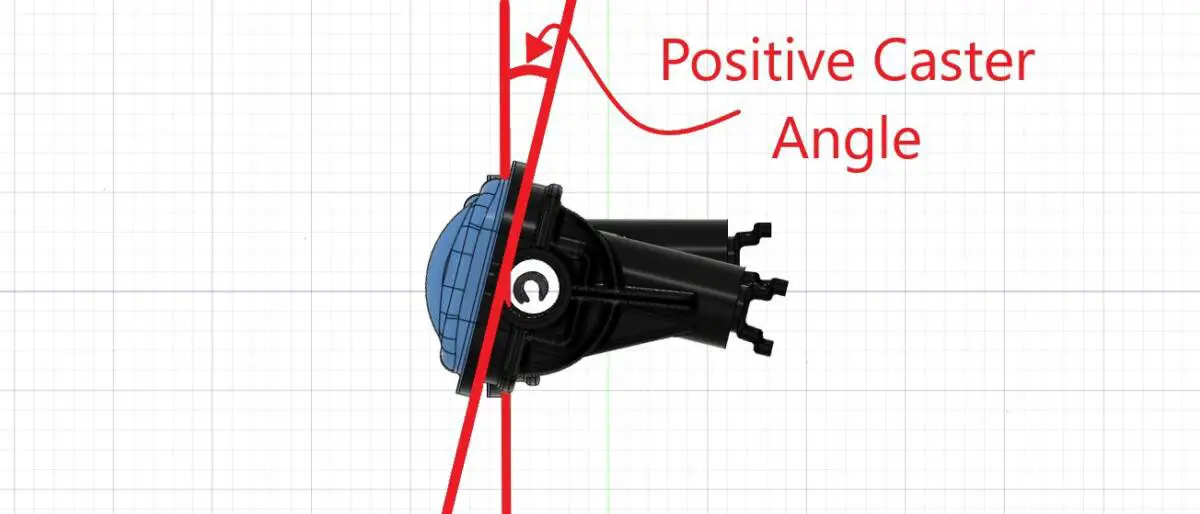
So what’s the big deal? The deal is you’ve made changes in one component without fixing the other which can lead to very poor driving conditions & quality and in some cases become quite dangerous.
By having adjustable control arms, you are able to correct this angle and realign your axle back to the center of the wheel well.
If you bought your Jeep brand new, you’re fortunate in the fact that you know exactly how your Jeep is set up because it’s straight from the factory. However, if you bought your Jeep used and there are any modifications to it, now is the time where you want to get comfortable under your car and start getting some information on your setup.
Because Jeeps are so easily customized, there is a world of possibilities as to how the previous owner did things. And if you want to do things right, you yourself need to know exactly what you’re working with. Here are some things to check and make note of.
- Upper and Lower Control Arms
- Are they stock? If not, are they adjustable or fixed length?
- Current Ride Height
- If you have any kind of lift, you need to know how much
- Pinion Angle and Caster Angle
- This one is a little more involved but this video does a great job describing what you’re looking for. This angle finder would definitely make the job easier.
After you have this information recorded, you’re already in a much better position to determine what lift kit you need and want. The reason is that you know exactly what you have, what you need, and possible mistakes you need to correct.
We take this information along with our game plan for our Jeep and we dive into the different types of lifts available to accomplish what we want.
What are the Different Types of Lifts for Jeeps?
Fortunately, there isn’t just one kind of lift for Jeeps. There are in fact a few ways to add some height to your rig depending on how much money and work you want to incorporate.
The 3 main lift types for Jeeps include:
So what are the differences? Well, I’m glad you asked. Let’s look at each one below.
What is a Body Lift?
Body lifts work by placing spacers between the body of your vehicle and the frame.
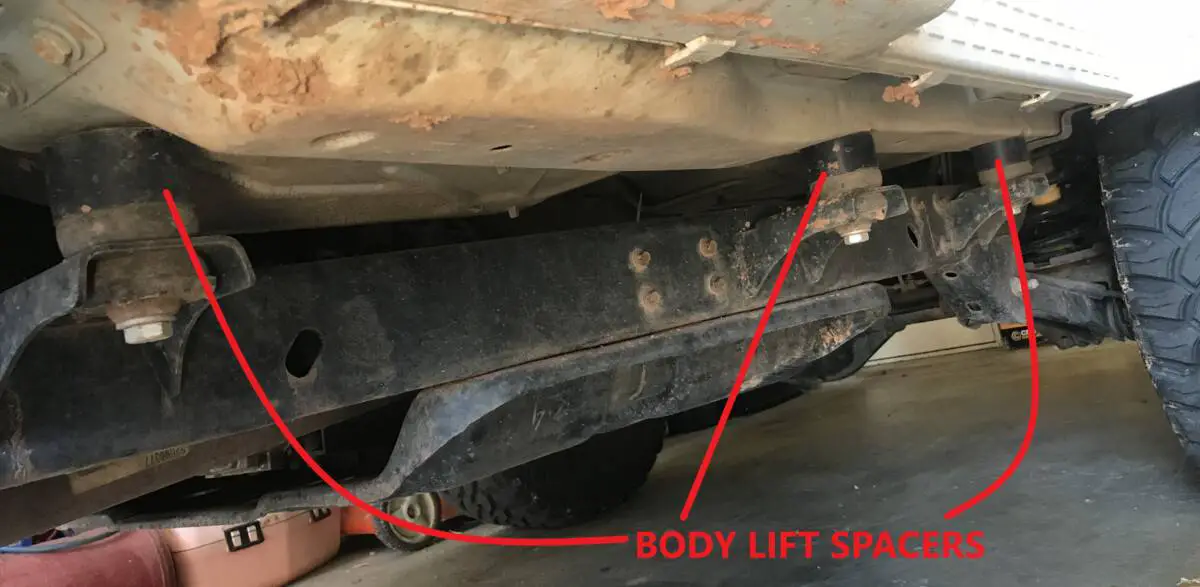
In almost all cases, you don’t want to exceed 1.5″ to 2″ of body lift. Anything over those heights becomes a safety issue and also looks ridiculous. These kinds of lifts allow you to gain an extra inch to two for wheel clearance without having to jump up in suspension lift.
One of the best combos of lift for a Jeep TJ is a 4″ suspension lift combined with a 1.5-inch body lift. This gives you 5.5″ of lift without a 5.5-6 inch suspension lift. Once you cross the threshold of 4″ suspension lifts, you dive into a world of things that have to change.
What is a Spacer Lift?
Spacer Lifts are quite literally spacers that sit above the coil spring. The effect of this is “lowering” the upper perch for the coil spring. So, if you have a 2″ spring spacer, you are essentially raising your ride height by two inches because of where the spring is now situated.
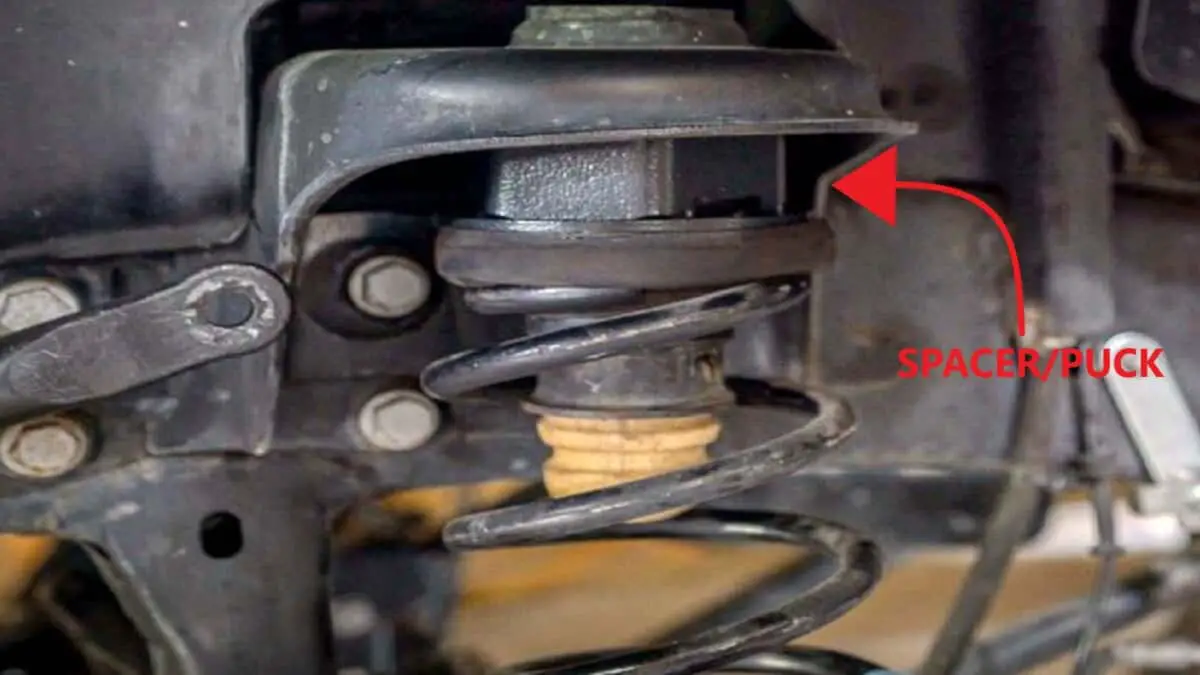
Similar to body lifts, there is a limit of what you want to do with a spacer lift. The “general” consensus is not to exceed 2.5″ of spacer lift with 2″ really being the most preferred. In most cases, raising your lift 2″ comes with minimal effects. However, if you cross the 2.5″ to 3″ threshold, you really to start addressing other components, geometry, and angles to return your Jeep to “factory” specs and safety.
What is a Coil Spring Lift?
Coil Spring Lifts are what every serious off-roader should aim for. These lifts raise the height of your Jeep by the use of taller coil springs and, if you get the full kits, longer control arms along with any other necessary components.

I went years without a full coil spring suspension lift and it is definitely doable. But if you want to do things right and go higher than 2″, then a coil spring lift is your ticket to success.
Long Arm or Short Arm Lifts
The debate between short arm lifts and long arm lifts is an ugly can of worms with many different opinions and experiences.
Short arm lifts utilize control arms with lengths similar to stock control arms and most of the time use the same mounting locations. For most any Jeep, a lift between 1″-4″ can be more than adequately accomplished with a short arm lift. Because you aren’t changing any major geometry, bracket locations, or needing more material, short arm lifts are less expensive than long arms.
Long arm lift kits utilize control arms that are much longer than stock and require mounting locations to be changed usually closer to the middle of the Jeep. The appeal of long arm kits, to most people, is the idea they provide better geometry and riding comfort. While I haven’t run one, I can’t speak to this. However, until you get to 5″ or more in lift, I can almost guarantee that you don’t need one. If you have a bad ride, there are usually two things to address…shocks and tire pressure.
There’s a strong chance that if you are wanting over 5″ of lift, you have serious goals and purposes for your Jeep/Rig and probably have a good understanding of what you need to accomplish that. Therefore, you probably wouldn’t be reading this article. But, if you are reading this, and are trying to determine the best lift kit to get, I’d be willing to bet you don’t need a long arm kit.
Because I have not run one myself and am only talking from the knowledge of others, I won’t tell you not to consider a long arm if that’s what you really want. However, I’ll take a firm stance on this one issue.
If it is a bolt-on long arm kit, you don’t want it, need it, and should not be anywhere near it.
If you are going the route of a long arm kit, do your research and have it installed by a professional with specific experience doing one. Any long arm lift kit worth even considering will have several fabrication processes and a considerable amount of welding involved. And if you are lucky enough to know the guy for the job, chances are he won’t need a kit as he’ll be able to fabricate his own from raw materials.
What You Need at Each Lift Height
What I want to provide below is a skeleton of what you will need at the most common lift heights for a SHORT ARM LIFT.
As each Jeep is different, you will need to get your hands dirty in determining each component you may or may not need. The below is from my knowledge of my 1999 Jeep TJ.
If you are driving a newer Jeep, chances are you have some more features from the factory that you might not need to worry about.
| Lift Size (Inches) | Lift Options | Needed Parts |
|---|---|---|
| 1″ – 2″ | Body Lift or Spacer Lift or Coil Spring Lift | Longer Shocks and Desired Lift |
| 2.5″ | Spacer Lift or Spacer/Body Lift Combo or Coil Spring Lift | Longer Shocks, Desired Lift, Bumpstops, Adjustable Trackbar |
| 3″ | Coil Spring/Body Lift Combo or Coil Spring Lift | Longer Shocks, Desired Lift, Bumpstops, Adjustable Trackbar, Adjustable Control Arms, Sway Bar Disconnects |
| 3.5″ | Coil Spring/Body Lift Combo or Coil Spring Lift | Longer Shocks, Desired Lift, Bumpstops, Adjustable Trackbar, Adjustable Control Arms, Slip Yoke Eliminator (if applicable), Double Cardan Driveshaft, Extended Brake Lines, Sway Bar Disconnects |
| 4″ | Coil Spring/Body Lift Combo or Coil Spring Lift | Longer Shocks, Desired Lift, Bumpstops, Adjustable Trackbar, Adjustable Control Arms, Slip Yoke Eliminator (if applicable), Double Cardan Driveshaft, Extended Brake Lines, Sway Bar Disconnects |
| 5″ – 6″ | Coil Spring/Body Lift Combo or Coil Spring Lift | Longer Shocks, Desired Lift, Bumpstops, Adjustable Trackbar, Adjustable Control Arms, Slip Yoke Eliminator (if applicable), Double Cardan Driveshaft, Extended Brake Lines, Sway Bar Disconnects |
Again, this is merely a reference to some of the most common things needed. For instance, my 1999 Wrangler needed a Slip Yoke Eliminator (SYE) when I went past 3” of lift. However, newer Jeeps don’t come from the factory with a Slip Yoke, so lucky you if you have a new Jeep, you just saved $500.
Choosing the Right Lift Kit
So you’ve read all this information on things you’ll need and what lifts are and how they can be a big can of worms if you aren’t careful. Take a deep breath because I know when I hit that stage you’re at now, I felt overwhelmed and almost just decided it wasn’t worth it. But I promise it is, because now you actually know what to do vs. just slapping a 6″ lift on your rig and being greeted with a swarm of problems.
So out of all the lifts out there on the market, how do you choose yours? I wish I could give you a 100% straight answer that covered all the bases. But I’d be lying to you if I did.
So, let me give you four things to go by when choosing a lift.
- If it’s cheap, it’s cheap for a reason. Find out why and decide if you can live with it.
- Chances are this kit is missing key things that are needed for a proper lift. For example, things like adjustable arms to correct geometry.
- If you find a lift you like, google search that lift and spend some time reading forums for your Jeep with that lift. You’ll learn real quick what brands can be trusted and which ones can’t.
- example: I have a 1999 Jeep Wrangler TJ. I search “Best lift for 1999 Jeep Wrangler TJ forum” and I am directed to a couple of forums where the clear consensus for the best lift for my specific Jeep would be the Currie/Savvy 4″ lift. Now, it doesn’t show me that on the google results page but after about 20 min, I can read lots of real-world experience pointing me that way.
- Don’t be scared to piece your parts together if you can’t afford a full kit.
- Quality kits are expensive. So, maybe you buy the springs from one company, controls arms from another, and so forth.
- Pair your lift with shocks that are tuned to the springs you have.
- Unless you tune your own shocks, the only way to know this is to read around and find what people most recommend for the springs you decide to buy. You can waste a lot of money and end up with a crappy ride if you just go buy the most expensive King or Fox shocks out there.
If you’ve really read all this you’ll realize now how important having your goal is and how it affects your entire process. The reality is, most people don’t NEED a 6″ lift. And now you’re smart enough to swallow that pill. You can go loads of places with good driving skills, a moderate lift, and the right tires. Quality of lift is far more useful than the quantity of lift.
A quality kit will have all the components you need and want to lift your Jeep PROPERLY and correct any geometry along the way.
To help as much as I can, below are my top three brands to stay away from and my top three to lean towards. The rest is up to you.
| Jeep Lift Brands to Avoid | Jeep Lift Brands to Consider |
|---|---|
| Rough Country | Currie and/or Savvy |
| Skyjacker | Metalcloak |
| Pro Comp | Old Man Emu (OME) |
What is the Best Lift for a Jeep Wrangler TJ?
Now here’s a little bonus if you happen to be reading this and you own a Jeep TJ (1997-2006). I’m going to give you the straightforward answer to the question.
What is the best lift for a Jeep Wrangler TJ? The Currie/Savvy 4″ lift with a 1.25″ body lift is the best lift for the Jeep TJ. If you have the money, opt for the double adjustable control arms from Savvy Offroad. You will need an SYE and double cardan (DC) driveshaft to accomplish this properly. Advance Adapters SYE is a great kit to consider.
If you have the money, the information and links I just gave you will save you loads of time and headache. After literal YEARS doing research and gathering data and opinions, I have every confidence giving you that direct of an answer.
Conclusion
Sometimes what we want and need don’t always line up. And sometimes we don’t realize exactly what we want until we understand what we need. When I got my Jeep in highschool, I thought I could save up the money and drive to the local 4×4 shop and ask them to install a 6″ lift. I now understand why they stared at me blankly. I clearly knew aboslutetly nothing about suspensions and lifts.
Now, I realize for this Jeep, I don’t need a straight 6″ of suspension lift. I can conquer anything I have planned with this Jeep with a properly setup 4″ suspension and 1.25″ body lift. But the road to this understanding took lots of trial and error and learning.
More importantly than trying to decide on a lift, is getting out in your Jeep or other vehicle and getting experience behind the wheel. Learn what your rig is capable of right now, then decide how you can enhance that. Wherever you’re adventure leads you, keep The Wilderness on YOUR Side.

